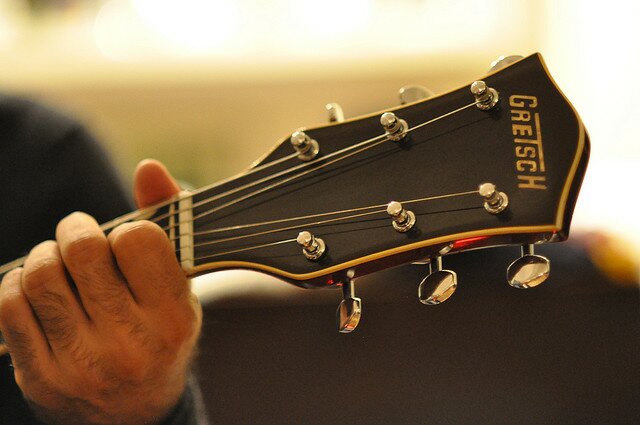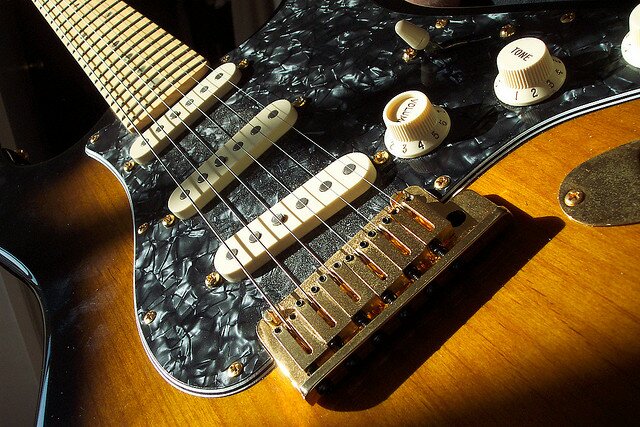Learn How to Improvise on the Guitar with the Pentatonic Minor Scales

In the previous lesson we took a look at two positions of the blues scale. Another basic scale that is often used to learn improvisation skills with, is the pentatonic major/minor scale. For a blues progress such as the one we’ll look at later on in the lesson, the minor pentatonic scale is the one we need.
Below are the first two positions of the minor pentatonic scale. Try and make sure you commit these and the blues scales to memory. If you need to keep checking the scale with the TAB, you’re only going to make life hard for yourself. Another thing you should start memorising is the layout of the root notes, flat thirds and fifths within these scales. Fortunately the blues scale and the minor pentatonic have these notes laid out in exactly the same places.
In the video the scales are played in the key of A minor (starting position one from the 5th fret) but you can move them about into any key you wish:
Pentatonic Minor Scale Position One:
Pentatonic Minor Scale Position Two:
The next step once you have learnt the positions is to start to move them about and transpose them into different keys. This is in fact a very simple process, much like moving a barre chord shape from one key to another. All you have to do is make sure that you start position one from the root note. For example if you need to play in the key of G minor, simply start position one from a G (3rd Fret, 6th String) and match up the root notes for positions one and two accordingly.
In order to be able to improvise effectively it is important to be very quick at finding the correct scale in the correct key. When another musician turns round suddenly and barks out “jam in C minor!!!!”, you don’t want to start flapping about where to place your scales! I’d recommend you use the same practice technique as we used for moving barre chords; chop up lots of different root notes, throw them into a hat and pick one at random. This will get you used to being put on the spot and you’ll soon find yourself getting nice and quick at finding the right position for your scales.
Now its time to put some of this into action! Below is a chord chart for a standard 12 bar blues in the key of A. You can use both the A blues and A pentatonic minor scales to improvise over this chord sequence. Two backing tracks are provided; one is complete with a lead guitar track, giving you suggestions of what can be achieved using the two positions of each scale we have looked at so far. The other backing track has been left with no lead guitar so you can practice improvising over the top!
Remember, keep the phrases simple and focusing around the root notes, 3rds and 5ths. You can’t go too far wrong if you follow the simple rules given. Good luck!!!
Tips:
- Try and create simple, interesting and bluesy sounding phrases
- Try hard not to play too much, space within a solo is a great way of adding some tension
- Remember to resolve your phrases around the key notes; roots, 3rds and 5ths. The key notes will change as the chords you are playing over change so keep your ears open. If a note sounds nasty and ‘unresolved’ simply move up or down one note in the scale to fix your problem
- Listen to the rhythm on the backing track and try and match the rhythm of your phrases to that of the band
Looking for something a bit simpler? Check out our guide to one octave blues scales!
image credit – Bob Jagendorf








